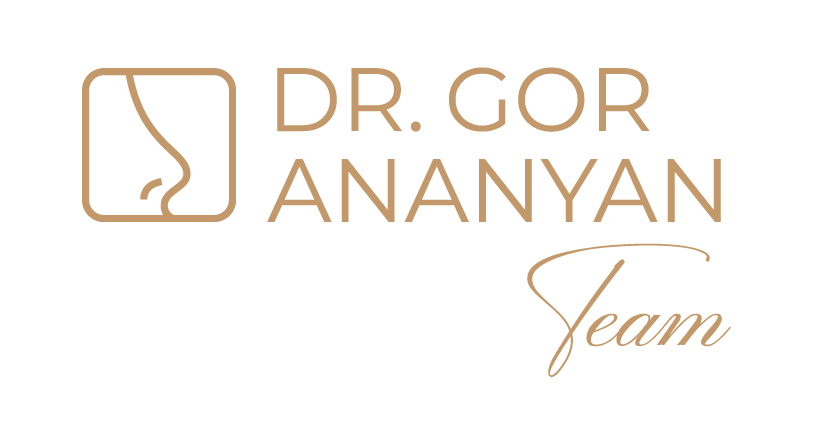SEPTOPLASTY
Septoplasty is a surgical operation primarily aimed at restoring full nasal breathing by
correcting deformities of the nasal septum. The nasal septum is a bone and cartilage plate
that divides the nasal cavity into two halves. Its deviation (congenital or acquired due to
trauma) can cause a range of problems: from persistent nasal congestion and difficulty
breathing to chronic rhinitis, sinusitis, snoring, and even impaired sense of smell. It is
important to understand that septoplasty is a functional surgery aimed at improving
health and quality of life. Unlike rhinoplasty, it generally does not change the external
shape of the nose, unless the septal deviation was the cause of external deformity (in
such cases, rhinoseptoplasty may be performed).
How is Septoplasty Performed?
Septoplasty is performed in a hospital setting, in a specially equipped operating room.
1. Anesthesia: The surgery is most often performed under general endotracheal
anesthesia, ensuring complete patient comfort and safety. In some cases, for
uncomplicated deviations and at the patient's request, local anesthesia with
sedation may be possible. The choice of anesthesia method is made by the
anesthesiologist in conjunction with the surgeon and the patient.
2. Surgical Stage: Access to the nasal septum is gained through incisions inside the
nasal passages (on the mucous membrane). During endoscopic septoplasty, an
endoscope is used for visualization. The surgeon carefully elevates the mucous
membrane with the perichondrium and periosteum from the deviated parts of the
septum. Then, the deformed fragments of cartilage and bone are removed,
straightened, or repositioned so that the septum assumes a strictly midline position.
Sometimes, removed cartilage fragments are specially treated (modeled) and then
re-implanted to preserve the supportive function of the septum.
3. Completion of Surgery: After straightening the septum, the mucous membrane is
repositioned. The incisions are closed with absorbable sutures. To fix the septum in
its new position and prevent hematoma formation (blood accumulation), special
silicone splints (thin plates) or soft tampons are placed in the nasal passages.
Splints often have breathing tubes, allowing the patient to breathe through the nose
even in the early postoperative period.
The duration of septoplasty usually ranges from 30 minutes to 1.5 hours, depending on the
complexity of the deviation and the scope of the intervention.
Advantages of Septoplasty in Our Clinic
We understand how important it is for you to breathe freely and feel healthy. By choosing
our clinic, you get:
• Expertise of ENT Surgeons: Surgeries are performed by highly qualified
otolaryngologists with many years of experience in successfully performing
septoplasties of any complexity. Our doctors regularly improve their qualifications
and master all modern techniques.
• Accurate Diagnosis and Planning: We use advanced diagnostic equipment,
including CT, for an accurate assessment of the nasal septum condition and
individual planning of each operation.
• Endoscopic Technologies: The use of endoscopic techniques allows for surgery
with maximum precision, minimal tissue trauma, and rapid recovery.
• Comfort and Safety: Modern anesthesia support, comfortable wards, and attentive
medical staff will make your stay in the clinic as safe and convenient as possible.
• Comprehensive Approach: If necessary, septoplasty can be supplemented with
other ENT surgeries (e.g., turbinate reduction, polyp removal) to achieve the best
functional result within a single intervention.
• Long-Term Result: Properly performed septoplasty ensures a lasting restoration of
nasal breathing and relief from related problems for many years.
Frequently Asked Questions (FAQ) about Septoplasty
1. Is septoplasty painful? What will the discomfort be like?
The surgery is performed under general or local anesthesia with sedation, so you will not
feel pain during the procedure. After the surgery, moderate discomfort in the nose, a
feeling of pressure or stuffiness, is possible, especially while tampons/splints are in place.
These sensations are well controlled by pain medications. Severe pain is usually not
experienced.
2. What kind of anesthesia is used for septoplasty?
Most often, septoplasty is performed under general anesthesia. This ensures maximum
comfort for the patient and optimal conditions for the surgeon. In some cases, for
uncomplicated deformities, local anesthesia with intravenous sedation may be possible.
The type of anesthesia is chosen individually by the anesthesiologist.
3. Do I need to stay in the hospital after septoplasty?
Yes, hospitalization for 1-2 days is usually required after septoplasty. This is necessary for
medical observation in the early postoperative period and for the removal of tampons/
splints from the nose.
4. Will the shape of my nose change after septoplasty?ПРОЦЕДУРЫ / PROCEDURES
No, isolated septoplasty does not change the external shape of the nose. The surgery is
performed inside the nasal cavity and is aimed at straightening the septum to improve
breathing. If you wish to change the shape of your nose, then rhinoplasty or
rhinoseptoplasty (simultaneous correction of the septum and nose shape) is necessary.
5. Can the nasal septum deviate again after surgery?
If all doctor's recommendations are followed in the postoperative period and there are no
serious nasal injuries in the future, significant re-deviation of the septum is extremely
unlikely. The effect of a well-performed septoplasty lasts a lifetime. Minor residual
deformities or age-related cartilage changes are possible, but they rarely affect breathing
function.
6. How soon will I be able to breathe normally through my nose?
Significant improvement in nasal breathing usually occurs immediately after the removal of
tampons or splints from the nose (on the 1st-3rd day after surgery). However, due to
postoperative swelling of the mucous membrane, some breathing difficulty may persist for
another 1-2 weeks. Nasal breathing typically becomes completely free within 2-4 weeks,
as the swelling subsides and healing progresses.
7. What happens if I don't have surgery for a deviated septum?
Ignoring a deviated nasal septum can lead to the progression of symptoms: worsening
breathing difficulties, development of chronic diseases (rhinitis, sinusitis, pharyngitis,
bronchitis), onset or worsening of snoring, reduced sleep quality, headaches, increased
fatigue, and decreased overall work capacity. In some cases, hearing problems may
develop.
